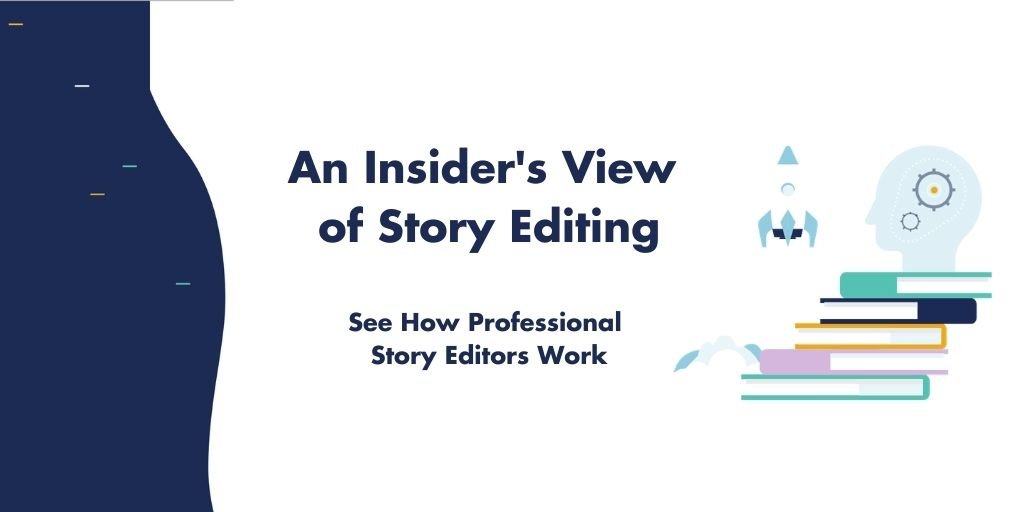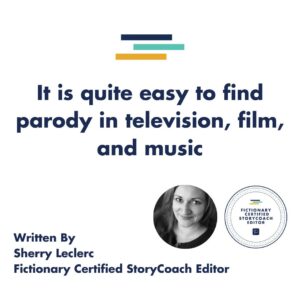
The term “pastiche” is not one I’ve heard often used, even though we see examples of it everywhere, so it was fun to wade into the pastiche vs parody debate.
Part of the reason for this could be that many people mistakenly use the term “parody” when they are in fact referring to pastiche. This is not surprising since pastiche and parody are very similar, and parody is the better-known term.
However, they are not the same thing, and there are some notable differences between the two.
Pastiche vs Parody: What is Pastiche?
According to Wikipedia:
“The word pastiche is a French cognate of the Italian noun pasticcio, which is a pâté or pie-filling mixed from diverse ingredients.”
It’s helpful to look back to the origins of this word to understand what pastiche is because, just like the pasticcio, a pastiche is exactly that—a work derived from diverse sources.
As the Wiki article says,
“Pastiche is an example of eclecticism in art.”
When we talk about pastiche in literature, we are talking about works that imitate various sources.
As an article on pastiche on the SuperSummary website says, in pastiche:
“An author marries different genres to show how malleable and boundary-defying they can be and how they can combine to create wholly original literary works.”
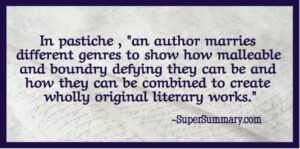
That last part is key.
For the work to be pastiche and not appropriation, or a copyright violation, the work has to be original.
As that same SuperSummary article explains, it does not copy chunks of text word-for-word from an original work, but it borrows elements from the original, such as characters, ideas, styles, and words—but the latter only as an intentional way to show the connection between the new work and the original.
This is a comparison meant to highlight the original work.
Examples of Pastiche
Shakespeare
If you are a fan of Shakespeare or of the theater, you may have heard of Rosencrantz and Guildenstern are Dead by Tom Stoppard. This work is: “an absurdist play that expands upon two side characters in Shakespeare’s Hamlet,” as described in an article on pastiche on the MasterClass website.
The Audible audiobook cover for Rosencrantz and Guildenstern are Dead gives clear visual references to the original work: the image of Shakespeare and the skulls, which are a reminder of the skull of “poor Yorick” in Hamlet.
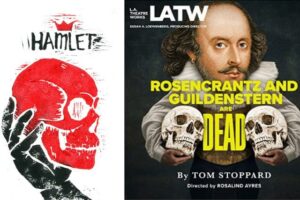
Sherlock Holmes
There are several works out there that have grown out of admiration for Sir Arthur Conan Doyle’s Sherlock Holmes or were inspired by it.
One of these is The Final Solution by Michael Chabon. In the novel by Chabon, it is hinted at, but never outright stated, that the elderly man who helps a nine-year-old boy and his parrot is Sherlock Holmes. His name is not stated, but the locals refer to him as a “once-famous detective”—in other words, Holmes.
Pastiche vs Parody: What is Parody?
Like pastiche, parody is a form of imitation in art.
In fact, the definition of parody in the Merriam-Webster online dictionary is:
“A literary or musical work in which the style of an author or work is closely imitated for comic effect or in ridicule.”
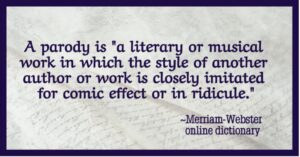
In literature, while parody can sometimes include more, it often focuses on one writer or one work. As an article on parody on Britannica online says:
“Parody is typically negative in intent: it calls attention to a writer’s perceived weaknesses or a school’s overused conventions and seeks to ridicule them.”
Examples of Parody
It is quite easy to find parody in television, film, and music.
If you are familiar with Monty Python’s body of work, most of their skits are parodies of stories from the bible and from Arthurian legend. Saturday Night Live often parodies famous situations and personalities in its skits. The movie Spaceballs is an obvious parody of Star Wars. And the list goes on.
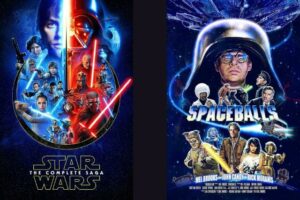
Examples of Parody in Literature
Pride and Prejudice and Zombies
This book by Seth Grahame-Smith names the work it parodies in its title: Pride and Prejudice by Jane Austen.
This book actually contains enough of the original work—from the names of the main characters to the love-story plot—that Jane Austen is credited as a co-author of the novel. It just has some undead and zombie fighting thrown in.
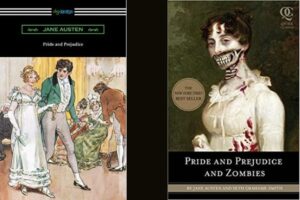
Bored of the Rings: This short novel, as explained on Wikipedia:
“Closely follows the outline of Lord of the Rings, lampooning the prologue and map of Middle-earth; its main text is a short satirical summary of Tolkien’s plot.”
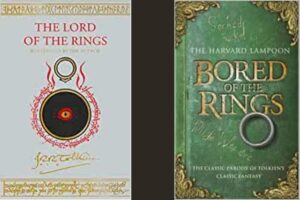
The Difference Between Pastiche vs Parody
The major difference between pastiche and parody comes down to tone and intention.
While both imitate the works of others, pastiche does so respectfully.
It is used to highlight and pay homage to the original works while not stealing directly from it. Parody, on the other hand, mocks and ridicules the original works. It isn’t necessarily meant to be cruel, but it is humorous and used for comedic effect, which differs from the purpose of pastiche.
Another way it differs is that pastiche uses a combination of techniques or conventions from an original work or body of works rather than closely imitating one particular work.
Parody is very close to the original in the way it’s written or, as in poetry and music, the way it sounds.
While both pastiche and parody are valid literary techniques which can be used to great effect, the terms are also sometimes used as a criticism of works that are unoriginal or that unintentionally or ineffectively “borrow” from other sources.
References & Further Reading
https://www.britannica.com/art/parody-literature
https://www.masterclass.com/articles/pastiche-guide
https://www.masterclass.com/articles/pastiche-vs-parody
https://www.quora.com/What-is-difference-between-pastiche-and-parody
https://www.supersummary.com/pastiche/
https://literarydevices.net/pastiche/
https://en.wikipedia.org/wiki/Pastiche
Article Written by Sherry Leclerc

Sherry Leclerc is a Fictionary Certified StoryCoach editor, Fictionary content creator, Writer’s Digest certified copy editor, and independent author. She is a member of Editor’s Canada, the Canadian Authors Association (CAA), and The Alliance of Independent Authors (ALLi).
Sherry holds a B.A. in English Language and Literature and a B.Ed. She is the sole proprietor of Ternias Publishing, through which she offers various editorial services. She also has a YouTube channel where she has a vlog about writing and editing, titled The Mythic Quill. You can find it on Youtube .
Sherry currently lives in Sydney, Nova Scotia, Canada. You can contact her at sherry@terniaspublishing.com or sherry@sherryleclerc.com
When do you ever get to see what a story editor delivers to a client if the client is not you?
If you’re thinking of becoming a story editor, this course is for you. Our course gives you an insider’s view of what happens in a story edit. This is similar to a structural or substantive edit for fiction.
Before you hire an editor or edit your own story, it’s important to understand what a story edit is.
Thirteen professional editors edited the same novel.
Each editor worked separately in Fictionary StoryCoach.
This course evaluates their edits and shows you what worked and what didn’t. We’ll show you two scenes before editing and after revisions based on the editors’ suggestions. We even compare the editors’ summary letters and per scene notes.
For writers looking to hire a professional story editor, this course shows you what you should receive from a story editor. It will also show you how an editor might look at your story.’
Sign up now for great value.
On sale for $39 USD. Use Coupon INSIDERSVIEW
Regular Price: $99.


